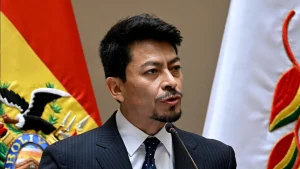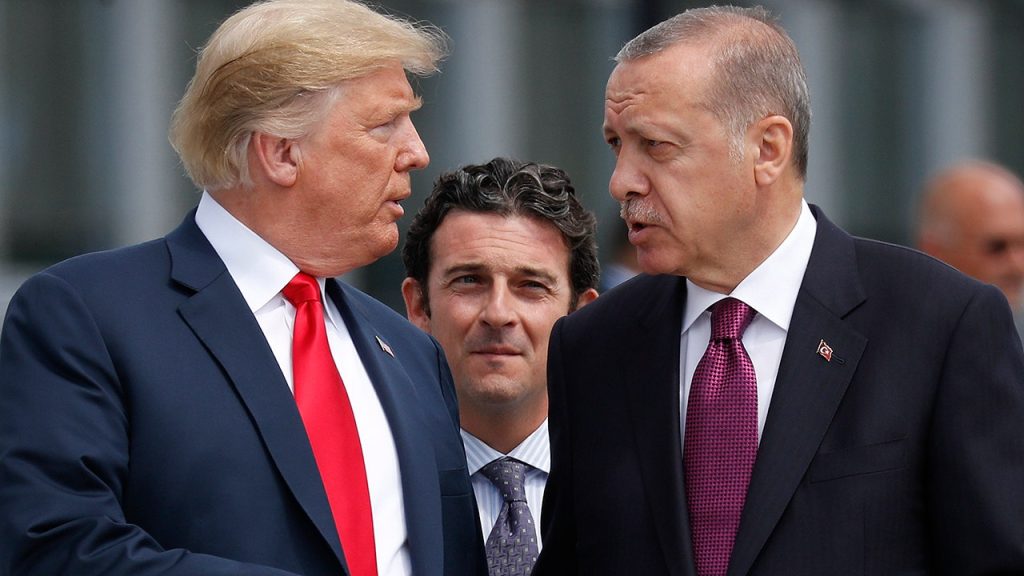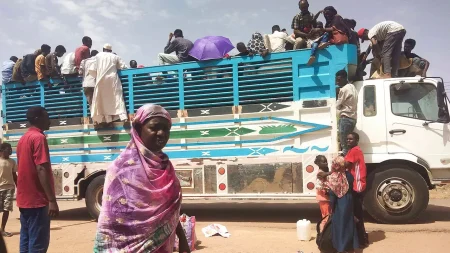The surprising collapse of the Bashar al-Assad regime in Syria, marked by the swift takeover by Hay’at Tahrir al-Sham (HTS), has dramatically reshaped the geopolitical landscape of the region, creating a power vacuum and escalating existing tensions. President-elect Trump’s characterization of the events as an “unfriendly takeover” orchestrated by Turkey highlights the complex interplay of regional actors and their competing interests. While acknowledging Assad’s brutal reign, Trump’s comments also underscore Turkey’s strategic maneuvering in the region, leveraging its support for the Syrian National Army (SNA) to expand its influence in the war-torn nation. This rapid shift in power has raised concerns among Western security experts about the potential for increased instability and the extent of Turkey’s influence over Syria’s future.
The fall of Assad, after nearly 14 years of brutal civil war, has brought an end to his oppressive regime but has also ushered in a new set of challenges. HTS, an al Qaeda-derived organization, now controls vast swathes of Syrian territory, including the capital Damascus. Despite being designated a terrorist group by the U.S., HTS enjoys the backing of Turkey, adding another layer of complexity to the already volatile situation. The future of Syria under HTS rule remains uncertain, raising concerns about the potential for further conflict and the implications for regional stability. The sudden power shift has also intensified the precarious position of the U.S.-backed Syrian Democratic Forces (SDF), primarily composed of Kurdish fighters who have been instrumental in the fight against ISIS.
The SDF, a crucial ally for the U.S. in its counterterrorism efforts, now faces an intensified threat from Turkey, which views the group as an extension of the Kurdistan Workers’ Party (PKK), a designated terrorist organization. Turkey’s long-standing animosity towards the SDF has led to repeated clashes, further destabilizing the region. The recent cease-fire agreement brokered by the U.S. between the SDF and the SNA offered a glimmer of hope for de-escalation, but the subsequent collapse of negotiations and renewed military buildup near the Kurdish-held town of Kobani indicate a return to hostilities. This fragile situation highlights the precarious position of the SDF and the challenges of balancing competing interests in the region.
The unfolding events in Syria have exposed the inherent difficulties of navigating alliances and rivalries in a complex geopolitical environment. The U.S. faces the challenge of supporting its Kurdish allies while maintaining its relationship with Turkey, a NATO ally with conflicting interests in the region. The collapse of the Assad regime has emboldened Turkey, allowing it to exert greater influence in northern Syria through its proxy forces, the SNA. This dynamic has put the SDF in an increasingly vulnerable position, caught between a hostile Turkey and the uncertainty of a new ruling power in Syria. The U.S. faces a difficult balancing act, trying to maintain stability and prevent further escalation while safeguarding its own interests and supporting its allies.
The volatile situation in Syria underscores the need for careful diplomacy and strategic engagement to prevent further escalation and address the underlying causes of the conflict. The fall of Assad has created a power vacuum, leaving the future of Syria uncertain and raising concerns about the potential resurgence of extremist groups. The complex web of alliances and rivalries in the region adds another layer of complexity, making it challenging to achieve a lasting peace. The U.S. must navigate these complex dynamics carefully, working with its allies and regional partners to address the security challenges and promote a stable and inclusive future for Syria.
The current situation calls for a comprehensive approach that addresses the political, economic, and security challenges facing Syria. The international community must work together to support a political process that leads to a representative and inclusive government, ensuring the rights of all Syrians are protected. Economic development and humanitarian assistance are crucial to address the needs of the Syrian people and prevent further instability. Furthermore, a concerted effort is needed to counter the threat of extremist groups and prevent the resurgence of terrorism in the region. The future of Syria depends on the collective action of the international community to address these interconnected challenges and build a peaceful and prosperous future for the country.














